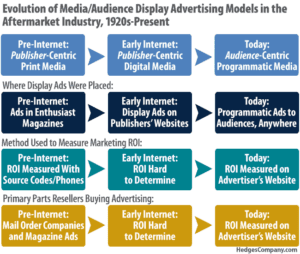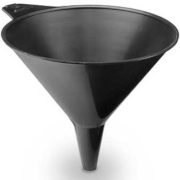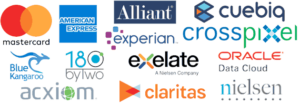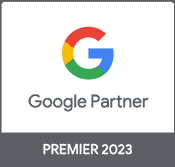Focus on Audience Buying and Audience Planning for Better Digital ROI
Audience buying is the new marketing strategy in 2021 and audience planning is replacing media planning. Media buying decided to take an early retirement.
The world of media is going through the biggest transformation in marketing history.
In fact, marketers can now hyper-target custom audiences interested in their products and services. This audience buying and audience planning marketing technology is now available in the aftermarket industry.
Audience buying, audience planning: changing rapidly through technology and big data
Whatever your level of expertise – marketing professor, chief marketing officer (CMO), experienced media buyer – it’s more difficult to stay ahead of the ever-changing world of media, marketing technology, audience technologies and marketing platforms.

CLICK TO ENLARGE: Audience buying is the predominant best practice advertising model today. This illustrates the evolution from print advertising and mail order companies decades ago, to today’s audience-centric programmatic marketing technology.
Consumers constantly evolve how they find information online before making a purchase. Today, marketing strategies and marketing mix needs to mirror this changing consumer behavior. And, to make that possible, big data creates new marketing opportunities and opens up new audiences.
Evolution from media buying to audience buying
This chart illustrates the three waves of change in marketing that have happened in the aftermarket. It starts in the 1920s and the first aftermarket magazines and the 1940s when the era of Hot Rod magazine began, to early days of the internet, and finally to the sophisticated digital marketing world today.
Today, marketers can plan, execute and measure advertising by focusing on audience buying and extensive customer segmentation. Prospective buyers are reached most efficiently by targeting audiences that are ready to buy.
Granular targeting of buyers, the path to purchase and the “funnel”
 Today, marketing best practice is to focus on customer segmentation and a very granular approach. The “sales funnel” is a familiar way to describe the selling process, although it’s a case of over-simplification. Still, we’ll use it to illustrate our point.
Today, marketing best practice is to focus on customer segmentation and a very granular approach. The “sales funnel” is a familiar way to describe the selling process, although it’s a case of over-simplification. Still, we’ll use it to illustrate our point.
Consumers in the early stage of buying are “top of funnel.” As the process moves on, they progress to “mid funnel” and finally “bottom funnel.” As consumers drop out of the path to purchase, the funnel gets narrower. And at the bottom of the funnel are buyers.
It’s important to reach consumers at different stages of the funnel. That means use different marketing strategies and messages at top, middle and bottom.
Fortunately programmatic marketing does this programmatically, of course. Programmatic marketing lets marketers have a more customer-centric approach. Audience buying ensures targeted messages, engaged consumers and a high-value marketing proposition. Comparatively, mass media is too generalized, too broad.
How audiences are created

CLICK TO ENLARGE: Audience buying is possible by using anonymous consumer data, aggregated by big data companies. Here are just a few of hundreds of companies creating audiences.
Audiences used for programmatic marketing come from big data companies. These are known as third-party audiences.
It’s important to note, third-party audiences work even in a cookie-less world. Here’s how.
Due to privacy concerns, web browsers such as Apple’s Safari and Mozilla’s Firefox started blocking third party cookies back in 2019. However, in reality there’s a big difference between third-party cookies and third-party audience buying.
Third party audiences are built using big data and various consumer databases. Most third party audiences don’t rely on one source of data. They use multiple sources of data create a more robust and targeted audience. Big data companies build third party audiences by combining anonymized online data with offline data from many different sources. Online sources include device ID. Offline sources include retail purchase history, loyalty card information, charge card history, demographics, automobile purchases and many dozens more.
Audiences from Google and other sources
 Google is the most widely-known source of digital third-party audiences. Google’s big offspring, DoubleClick, utilizes a lot of third-party audiences onboarded by the big data audience companies.
Google is the most widely-known source of digital third-party audiences. Google’s big offspring, DoubleClick, utilizes a lot of third-party audiences onboarded by the big data audience companies.
Google offers many relevant audiences, relying on interest, demographics and in-market purchase interest through Google Ads.
 On the other hand, big data third-party audience providers allow a more granular approach to audience buying, not commonly available through the Google ecosystem. These audiences are diverse. Examples include buyers of auto parts, segmented by buying history; people who recently visited one of the auto parts chain stores or hardware stores; heavy purchasers of aftermarket products as verified by American Express under their Amex Advance data service.
On the other hand, big data third-party audience providers allow a more granular approach to audience buying, not commonly available through the Google ecosystem. These audiences are diverse. Examples include buyers of auto parts, segmented by buying history; people who recently visited one of the auto parts chain stores or hardware stores; heavy purchasers of aftermarket products as verified by American Express under their Amex Advance data service.
Audience examples
There are seemingly unlimited choices when it comes to aftermarket consumer audiences.
Here are just a few examples.
There are tens of thousands of audiences.
Combing two audiences together creates even more. This page could go on for a long time so we just have these examples here to give you an idea. If you have questions on audiences please contact us for more information or clarification.
| Aftermarket Consumer Audience | Audience Description |
|---|---|
| Chevy Silverado Owner plus Intent to Buy Truck Parts and Accessories | Verified owners of Chevy Silverado 1500 whose online or offline behavior indicates they’re actively shopping for truck parts and accessories. |
| Ford Mustang Owner plus Intent to Buy Auto Parts and Accessories | Verified owners of Ford Mustang whose online or offline behavior indicates they’re actively shopping for truck parts and accessories. |
| In-market for Chevy Camaro | Consumers whose online or offline behavior indicates they’re actively shopping for a Chevy Camaro. Can be segmented into shoppers for new or used. |
| Ford Mustang Fans and Enthusiasts, powered by Amex Advance (Wiland) | Ford Mustang enthusiasts, likely owners, whose buying history is verified by American Express data. |
| Intent to Buy Car Wash Detail Services powered by Amex Advance (Wiland) | Car enthusiasts whose online or offline behavior indicates they’re actively shopping for car wash/detailing services |





